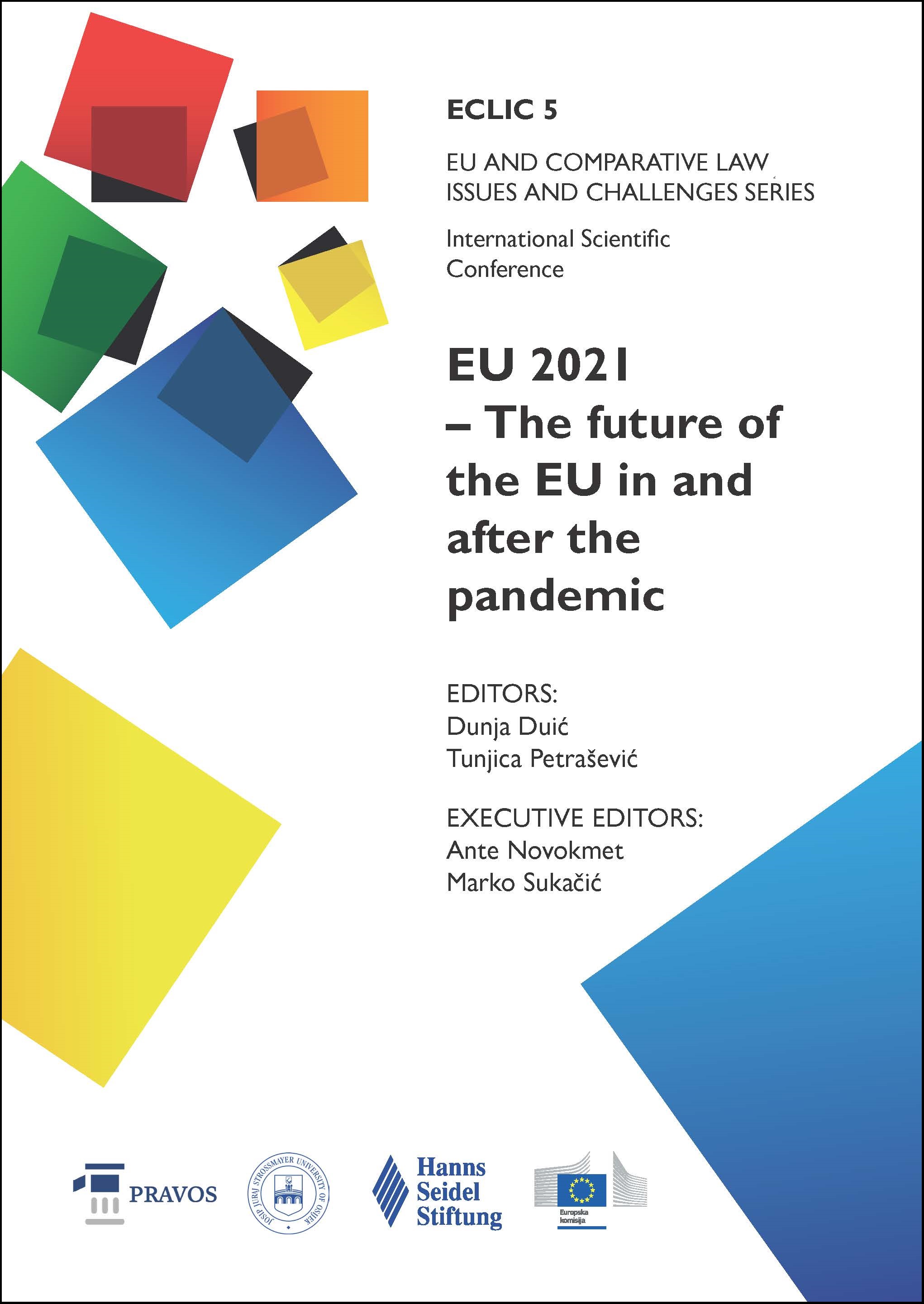TRIGGERING EMERGENCY PROCEDURES
A CRITICAL OVERVIEW OF THE EU’S AND UN'S RESPONSE TO THE COVID-19 PANDEMIC AND BEYOND
DOI:
https://doi.org/10.25234/eclic/18300Abstract
The large-scale COVID-19 pandemic is a severe public health emergency which poses distressing social and economic challenges to the international community as a whole. In order to provide immediate and effective support to affected welfare and healthcare systems as well as to build their lasting, inclusive and sustainable recovery, both the European Union and the United Nations have introduced a number of urgent measures aiming to help and protect citizens and economies. This paper looks into the specificities of urgent procedures launched and carried out by the two most influential international organisations with a view to rapidly respond to the unprecedented COVID-19 crisis. More specifically, it focuses on the involved institutions and steps of urgent procedures as well as on their most remarkable outcomes. In the case of the European Union, the emphasis is put primarily on two Coronavirus Response Investment Initiatives (CRIIs), adopted during the Croatian Presidency of the Council in one of the fastest legal procedures in the history of the European Union, and the Recovery Assistance for Cohesion and the Territories of Europe (REACT-EU) as an extension of the CRIIs’ crisis repair measures. The overarching United Nations’ response is assessed through an analysis of its urgent policy agenda developed on the premise that the COVID-19 pandemic is not only a health and socio-economic emergency but also a global humanitarian, security and human rights crisis. This particularly includes procedures foreseen by the Global Humanitarian Response Plan (GHRP) and the Strategic Preparedness and Response Plan (SPRP). In addition, the aim of the paper is to provide a critical overview of the subject by highlighting three pivotal elements. First, the paper sheds light on the financial aspects of the urgent fight against the COVID-19 pandemic, necessary for turning words into action. Notably, this refers to funds secured by the Multiannual Financial Frameworks 2014-2020 and 2021-2027, and the Next Generation EU recovery instrument, on the one hand, and the UN COVID-19 Response and Recovery Fund, the UN Central Emergency Response Fund and the Solidarity Response Fund, on the other hand. Second, it offers a comparative evaluation of the end results of the European and global emergency procedures in mitigating the impacts of the COVID-19 pandemic. Finally, it summarises the underlying elements of measures governing the aftermath of the ongoing crisis, i.e. those promoting a human-centred, green, sustainable, inclusive and digital approach to future life.
Downloads
Published
How to Cite
Issue
Section
License
Copyright (c) 2021 Nives Mazur-Kumrić, Ivan Zeko-Pivač

This work is licensed under a Creative Commons Attribution-NonCommercial 4.0 International License.
Authors retain the copyright on the papers published in the Journal, but grant the right of first publication to the Journal. Papers accepted for publication or already published in ECLIC of the Faculty of Law in Osijek may be published by the author(s) in other publications only with proper notice of its previous publication in ECLIC.


